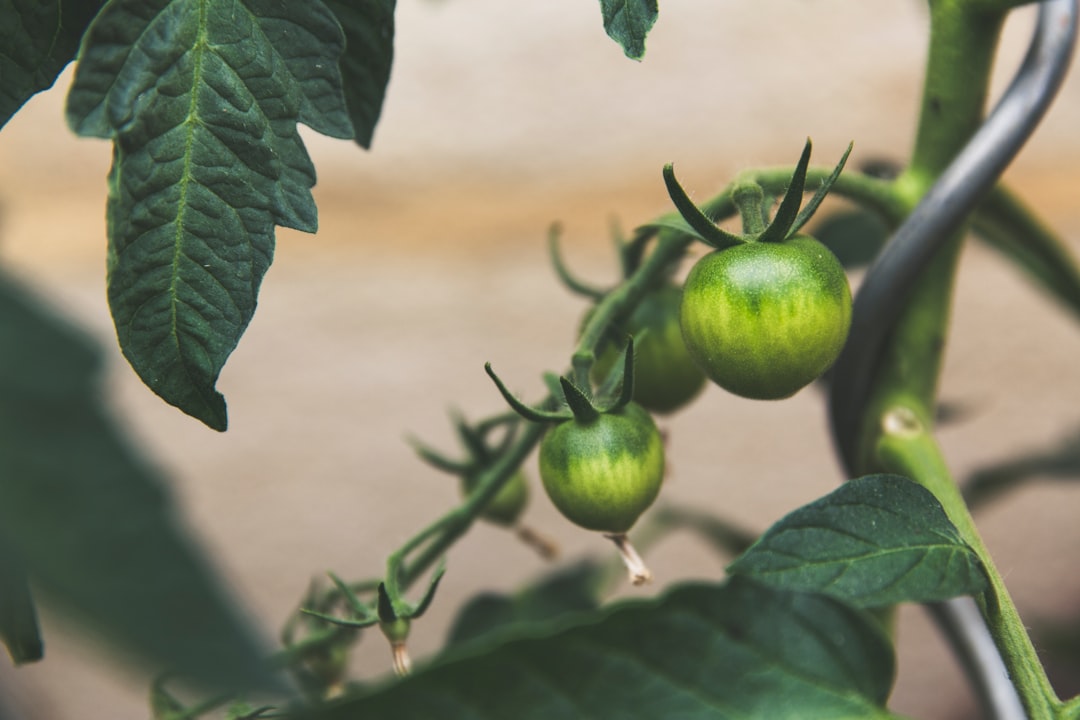Blossom-end rot is a common physiological disorder that affects various fruiting vegetables, particularly tomatoes, peppers, and eggplants. This condition manifests as a dark, sunken area at the blossom end of the fruit, which can lead to significant losses in yield and quality. The primary cause of blossom-end rot is a calcium deficiency in the developing fruit, often exacerbated by inconsistent watering practices.
When plants experience fluctuations in moisture levels, their ability to absorb calcium from the soil diminishes, leading to the characteristic symptoms of this disorder. The occurrence of blossom-end rot is not solely linked to a lack of calcium in the soil; rather, it is a complex interplay of environmental factors and plant physiology. For instance, rapid growth spurts during periods of high temperatures can increase the demand for calcium, while drought stress can hinder the plant’s uptake of this essential nutrient.
Additionally, certain soil types and conditions can affect calcium availability. Sandy soils, for example, tend to drain quickly and may not retain sufficient moisture or nutrients, making them more prone to blossom-end rot.
Key Takeaways
- Blossom-end rot is a common disorder in tomatoes and other fruits caused by calcium deficiency and fluctuating moisture levels.
- Proper soil preparation involves testing and amending the soil with organic matter to ensure adequate drainage and nutrient availability.
- Choosing the right fertilizer with balanced levels of nitrogen, phosphorus, and potassium is essential for preventing blossom-end rot and promoting overall plant health.
- Watering techniques such as deep, infrequent watering and using soaker hoses can help prevent moisture fluctuations and reduce the risk of blossom-end rot.
- Mulching around plants can help retain moisture, regulate soil temperature, and prevent calcium leaching, reducing the risk of blossom-end rot.
Proper Soil Preparation
Soil preparation is a foundational step in preventing blossom-end rot and ensuring healthy plant growth. A well-structured soil not only provides essential nutrients but also promotes optimal moisture retention and drainage. Before planting, it is advisable to conduct a soil test to determine pH levels and nutrient content.
This information can guide amendments that will enhance soil fertility and structure. For instance, if the soil test reveals low calcium levels, incorporating lime or gypsum can help raise calcium availability while also adjusting pH levels if necessary. In addition to amending nutrient deficiencies, proper soil preparation involves improving soil texture and aeration.
Adding organic matter such as compost or well-rotted manure can enhance soil structure, allowing for better root development and moisture retention. Organic matter also serves as a reservoir for nutrients, releasing them gradually as the soil microorganisms break it down. Furthermore, tilling the soil to a depth of at least 12 inches can help break up compacted layers, facilitating root penetration and improving overall plant health.
Choosing the Right Fertilizer

Selecting the appropriate fertilizer is critical in preventing blossom-end rot and promoting robust plant growth. Fertilizers come in various formulations, each with specific nutrient ratios that cater to different plant needs. For instance, a balanced fertilizer with equal parts nitrogen (N), phosphorus (P), and potassium (K) can support overall plant health during the early stages of growth.
However, as fruiting begins, a fertilizer higher in potassium may be more beneficial, as potassium plays a vital role in fruit development and quality. In addition to macronutrients, it is essential to consider micronutrients that contribute to plant health. Calcium is particularly important in this context; thus, choosing fertilizers that contain calcium or supplementing with calcium-rich amendments can help prevent blossom-end rot. Products such as calcium nitrate or calcium sulfate can be effective choices.
Moreover, slow-release fertilizers can provide a steady supply of nutrients over time, reducing the risk of nutrient leaching during heavy rains or irrigation.
Watering Techniques
| Technique | Advantages | Disadvantages |
|---|---|---|
| Drip Irrigation | Conserves water, reduces weed growth | Initial setup cost |
| Sprinkler System | Covers large areas, easy to install | Can be wasteful, may promote disease |
| Hand Watering | Precise control, good for small areas | Time consuming, inconsistent coverage |
Watering practices significantly influence the incidence of blossom-end rot. Inconsistent watering—characterized by alternating periods of drought and excessive moisture—can lead to stress in plants and hinder their ability to absorb calcium effectively. To mitigate this risk, establishing a consistent watering schedule is paramount.
Deep watering sessions that penetrate the root zone encourage roots to grow deeper into the soil, where moisture is more stable. Drip irrigation systems are particularly effective for maintaining consistent moisture levels while minimizing water waste. This method delivers water directly to the root zone, reducing evaporation and runoff.
Additionally, monitoring soil moisture levels using a moisture meter can help gardeners determine when to water accurately. By ensuring that plants receive adequate moisture without overwatering, gardeners can create an environment conducive to healthy fruit development and reduce the likelihood of blossom-end rot.
Mulching for Moisture Retention
Mulching serves as an effective strategy for moisture retention in the garden while also providing additional benefits such as weed suppression and temperature regulation. Organic mulches like straw, wood chips, or shredded leaves can help maintain consistent soil moisture levels by reducing evaporation from the soil surface. This is particularly important during hot summer months when plants are under increased stress due to heat and potential drought conditions.
In addition to conserving moisture, mulch contributes organic matter to the soil as it decomposes, enhancing soil structure and fertility over time. A layer of mulch approximately 2-4 inches thick is generally recommended for optimal results. However, it is essential to keep mulch away from the base of plants to prevent rot and discourage pests.
By implementing mulching practices effectively, gardeners can create a more stable growing environment that supports healthy fruit development and minimizes the risk of blossom-end rot.
Monitoring pH Levels

Monitoring Soil pH
Regularly monitoring soil pH through testing allows gardeners to make informed decisions about necessary amendments. If soil tests indicate that pH levels are too low (acidic), lime can be applied to raise pH and improve calcium availability. Conversely, if pH levels are too high (alkaline), sulfur or organic matter can be added to lower pH levels gradually.
Benefits of pH Adjustment
Adjusting pH not only enhances nutrient uptake but also promotes beneficial microbial activity in the soil, further supporting plant health.
Optimal pH for Healthy Fruits
By maintaining optimal pH levels through regular monitoring and adjustments, gardeners can create an environment that fosters healthy fruit development while minimizing physiological disorders like blossom-end rot.
Using Calcium Supplements
In cases where soil tests reveal insufficient calcium levels or when environmental conditions hinder calcium uptake, using calcium supplements can be an effective strategy for preventing blossom-end rot. Various forms of calcium supplements are available on the market, including calcium nitrate, gypsum, and lime. Each option has its unique properties and benefits; for instance, calcium nitrate not only provides calcium but also supplies nitrogen, promoting overall plant growth.
When applying calcium supplements, timing is critical for maximizing their effectiveness. It is best to apply these amendments during the early stages of fruit development when the demand for calcium increases significantly. Foliar applications of calcium solutions can also be beneficial; spraying a diluted solution directly onto the leaves allows for rapid absorption by the plant.
This method can be particularly useful during periods of high stress when root uptake may be compromised due to drought or other environmental factors.
Pruning and Trellising
Pruning and trellising are essential practices that contribute to healthy plant growth and fruit development while minimizing the risk of blossom-end rot. Pruning involves removing excess foliage or suckers that compete with fruit for nutrients and water. By focusing the plant’s energy on fruit production rather than excessive vegetative growth, gardeners can enhance fruit quality and reduce stress on the plant.
Trellising provides structural support for plants like tomatoes and peppers, allowing them to grow upright rather than sprawling on the ground. This vertical growth not only improves air circulation around the plants but also facilitates better sunlight exposure for all parts of the plant. Improved airflow reduces humidity around the foliage, which can help prevent diseases that may further stress plants and impact their ability to absorb nutrients effectively.
Avoiding Overcrowding
Overcrowding in garden beds can lead to increased competition for resources among plants, resulting in stunted growth and heightened susceptibility to diseases and disorders like blossom-end rot. When plants are spaced too closely together, they may struggle to access adequate sunlight, water, and nutrients necessary for healthy development.
Proper spacing not only allows individual plants to thrive but also facilitates better airflow between them, reducing humidity levels that can contribute to disease pressure. Additionally, well-spaced plants are easier to manage regarding watering and fertilization practices since each plant has more access to resources without competition from neighboring plants. By avoiding overcrowding through careful planning and adherence to spacing recommendations, gardeners can create a healthier growing environment that supports robust fruit development.
Protecting Plants from Extreme Weather
Extreme weather conditions—such as intense heat waves or heavy rainfall—can significantly impact plant health and increase the risk of blossom-end rot. High temperatures can lead to rapid water loss through transpiration while also increasing nutrient demands during critical growth stages. Conversely, excessive rainfall can lead to waterlogged soils that hinder root function and nutrient uptake.
To protect plants from extreme weather events, implementing strategies such as shade cloths during heat waves or using row covers during heavy rains can be beneficial. Shade cloths help reduce temperature extremes while providing some protection from direct sunlight during peak hours. Row covers can shield plants from excessive moisture while still allowing light penetration necessary for photosynthesis.
Additionally, creating windbreaks using taller plants or structures can help mitigate wind damage during storms.
Regular Inspections and Maintenance
Regular inspections and maintenance are vital components of successful gardening practices aimed at preventing blossom-end rot and promoting overall plant health. By routinely checking plants for signs of stress or disease—such as wilting leaves or unusual discoloration—gardeners can identify potential issues early on and take corrective action before they escalate into more significant problems. Maintenance tasks such as weeding, adjusting irrigation schedules based on weather conditions, and monitoring nutrient levels through periodic soil testing are essential for sustaining healthy growing conditions throughout the season.
Keeping detailed records of planting dates, fertilization schedules, and any observed issues can also aid in developing effective management strategies over time. By prioritizing regular inspections and maintenance routines within their gardening practices, growers can foster an environment conducive to healthy fruit production while minimizing risks associated with physiological disorders like blossom-end rot.
If you are interested in learning more about common plant diseases and how to prevent them, check out this article on common money plant diseases prevention and treatment. It provides valuable information on how to keep your plants healthy and thriving.
FAQs
What is Blossom-End Rot Disease?
Blossom-end rot is a common disorder that affects tomatoes, peppers, and other fruits. It is characterized by a dark, sunken area on the blossom end of the fruit.
What causes Blossom-End Rot Disease?
Blossom-end rot is caused by a calcium deficiency in the developing fruit. This can be due to fluctuations in soil moisture, which can affect the plant’s ability to take up calcium.
How can Blossom-End Rot Disease be prevented?
To prevent blossom-end rot, it is important to maintain consistent soil moisture levels and ensure that the plants are receiving adequate calcium. Adding calcium to the soil or using calcium-rich fertilizers can help prevent the disorder.
Can Blossom-End Rot Disease be treated?
Once a fruit has developed blossom-end rot, it cannot be cured. However, steps can be taken to prevent further fruits from being affected by maintaining proper soil moisture and calcium levels.
What are the symptoms of Blossom-End Rot Disease?
The main symptom of blossom-end rot is a dark, sunken area on the blossom end of the fruit. This can start as a small water-soaked spot and eventually become larger and turn black or brown.

